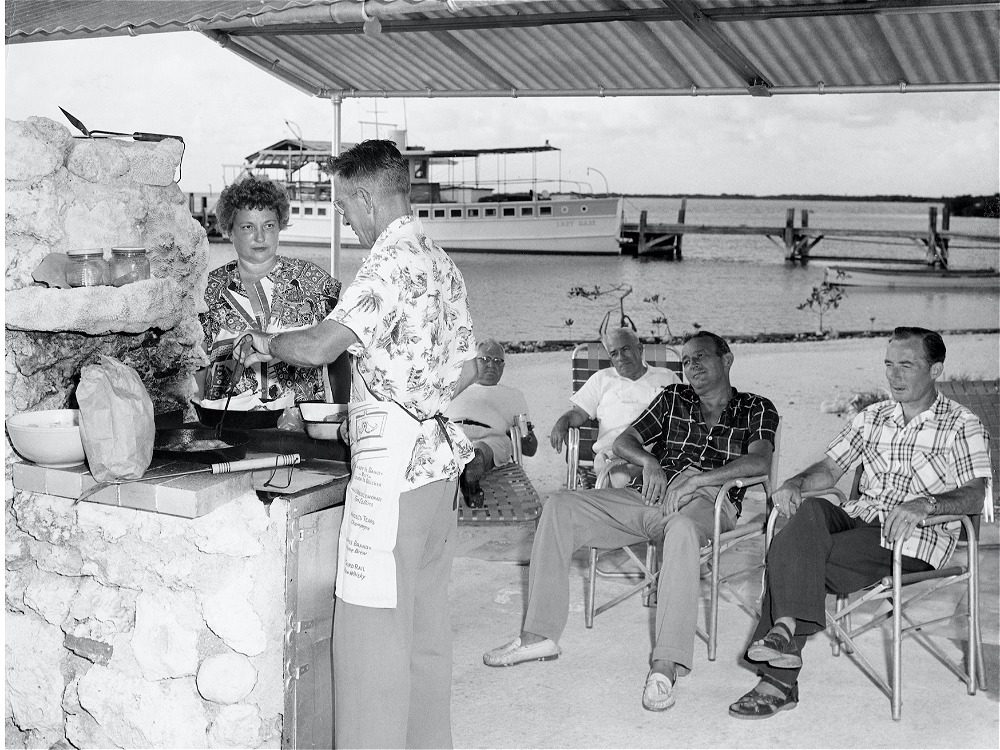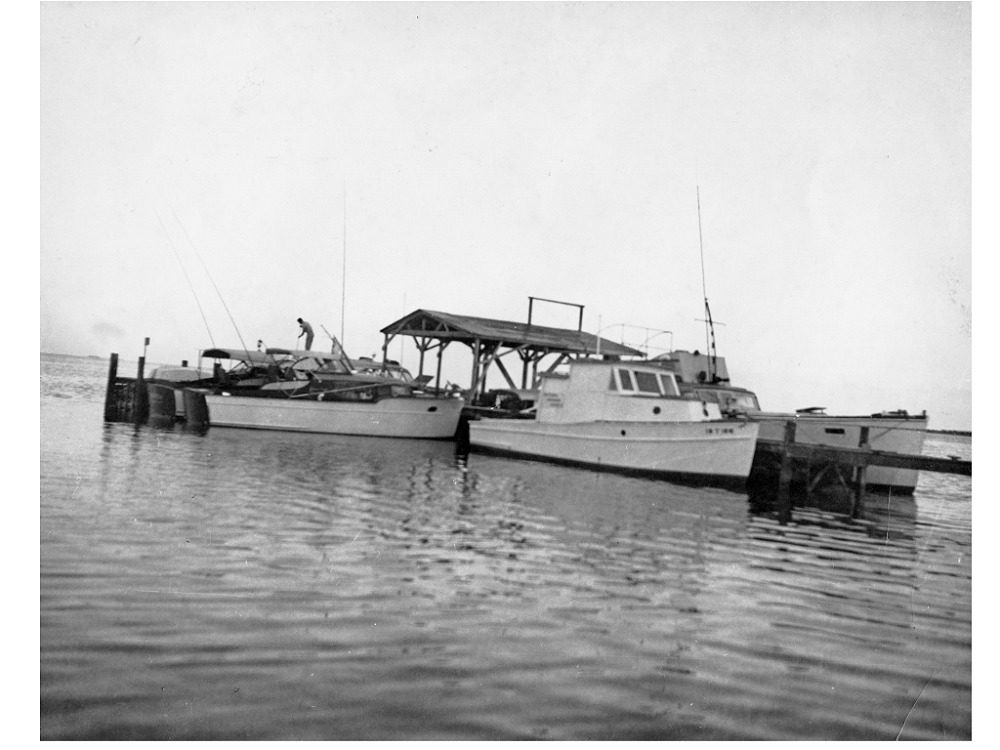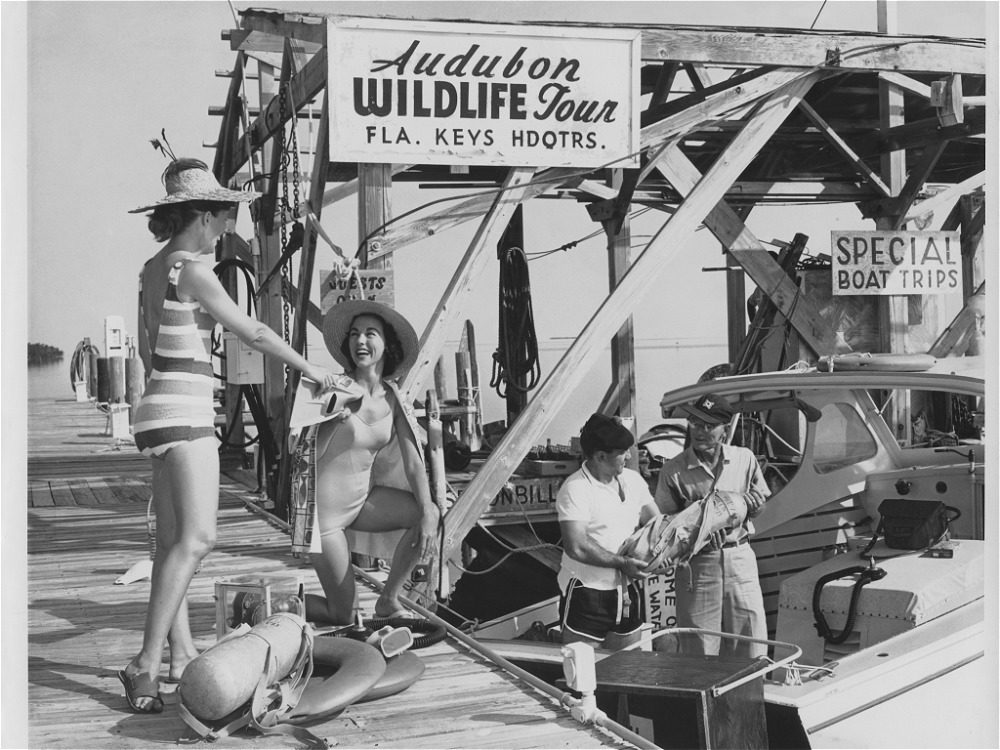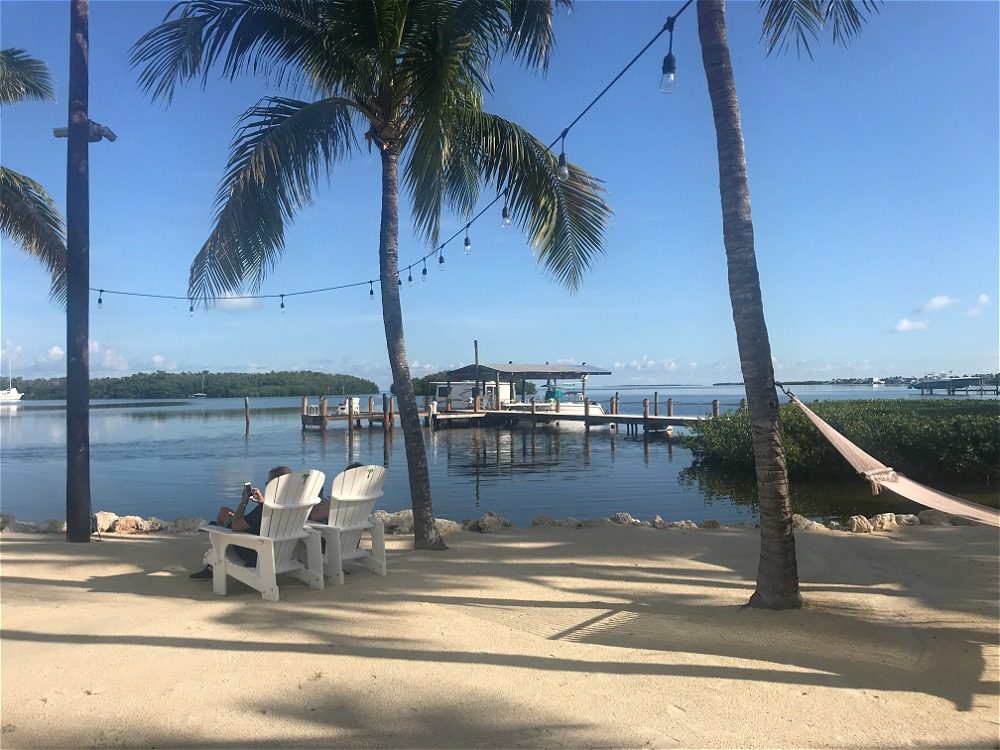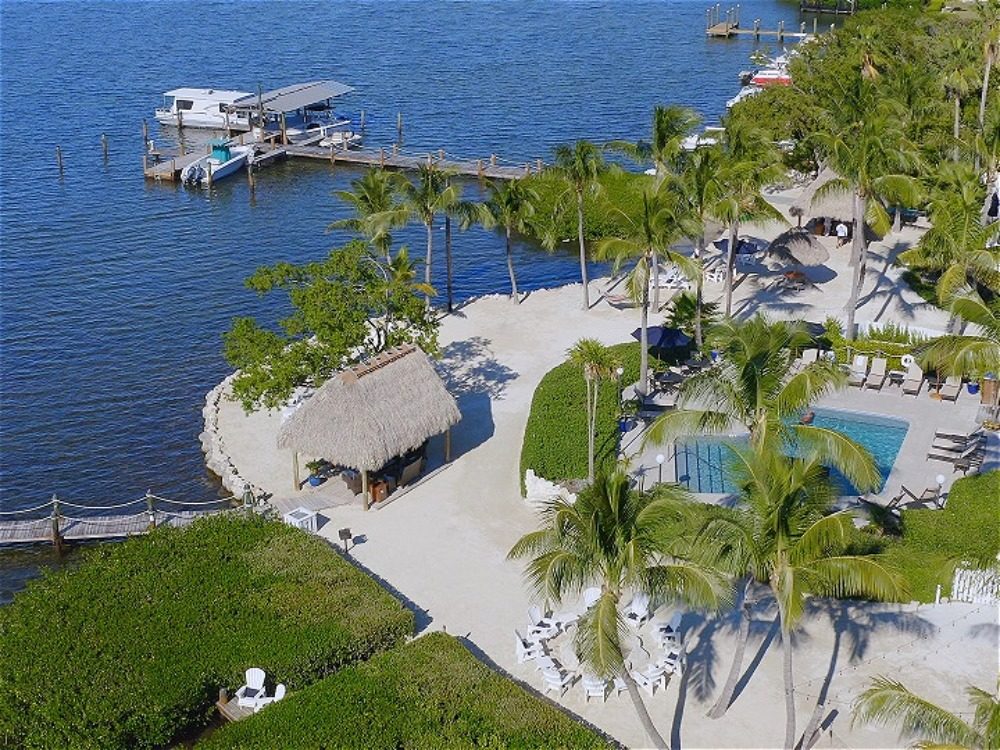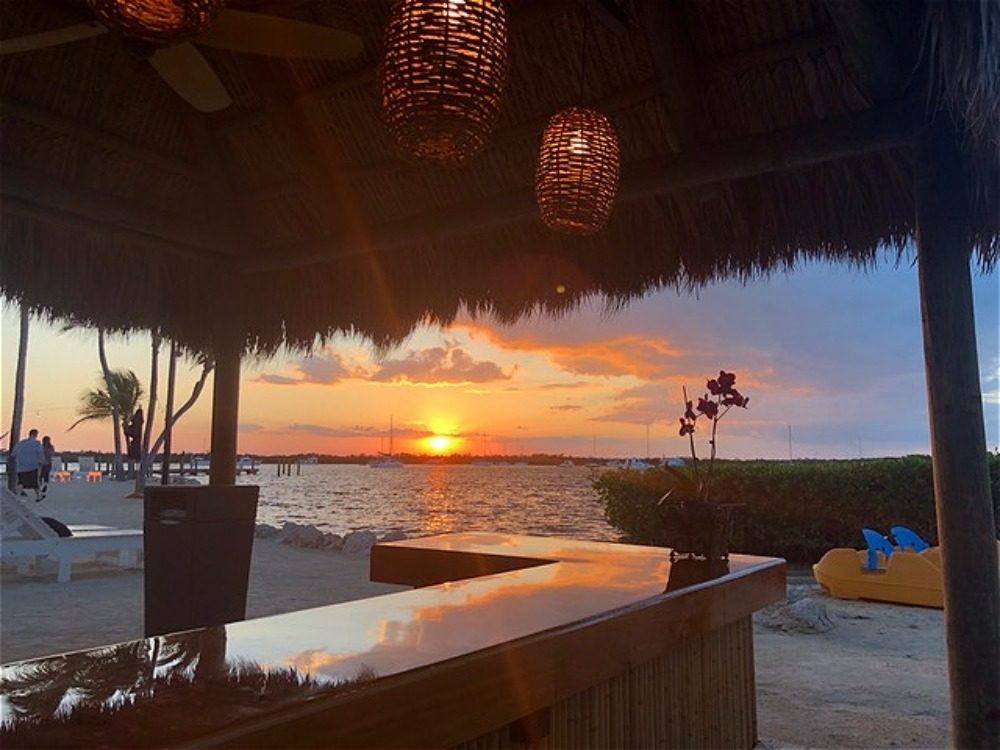Coconut Palm Inn's History
The Coconut Palm Inn is located in the town of Tavernier. Tavernier is uniquely situated at the southern tip of Key Largo often referred to as “The Diving Capital of the World” and the northern tip of Islamorada often called “The Sport Fishing Capital of the World.”.
Our hotel was originally built shortly after WWII in 1947 by Herbert Alley, an engineer, builder and noted conservationist. Mr. Alley, still very sensitive to the devastating effects of the 1935 hurricane, built his new hotel to withstand the strongest of storms. He brought in hydraulic cement by barge and used the steel rails from the Flagler Railroad recovered from the rubble of the storm to build the foundation and structure. The rails can still be seen in some of our rooms.
He chose the location for his new hotel on the Florida Bay near Tavernier Creek because it was a natural gateway to Everglades National Park and the Key Largo coral reef preserve later renamed John F. Pennecamp State Park. He gave the property its original name Key Haven and operated the hotel through the early 70s. The hotel became a retreat for tourists from all over the world where they could visit this spectacular tropical paradise teaming with exotic birds and fabulous underwater sea life. From the Key Haven docks, Mr. Alley conducted National Audubon Society sponsored tours into the Florida Bay and the Florida Everglades. From the docks, he also provided boating excursions, reef fishing, scuba diving, snorkeling, underwater photography and glass bottom boat tours into the warm waters of the Atlantic Ocean.
After Mr. Alley sold the property in the early 1970s, the property was split up and fell into disrepair. In the middle 1980's a retired airline executive, Frank Johnson, purchased the original parcels, combining them and reopening as a casual, low key dive resort under the name Frank's Key Haven. The property was operated by Mr. Johnson until the current owners purchased the property in 2001. The resort was renamed the Coconut Palm Inn and was totally renovated and updated into the property that it is today. Coconut Palm Inn is now a small, secluded, award-winning property unique to the Florida Keys. With 450 feet of beachfront, two large docks, spectacular sunsets, exotic tropical gardens, updated accommodations and amenities. It has become a favorite for couples, families, groups, destination weddings and visitors from around the world.
The Florida Keys' Rich History...
The Florida Keys has a rich history as far back as 3000 B.C. The first Keys' settlers were Native Americans including the Calusa and Tequesta tribes. In the early 1500's the Spanish claimed much of Florida and the Keys for the next 200 years and imposed their way of life on the Native Americans. They also exposed them to diseases that nearly wiped out the Native American population in Florida. In 1763, Spain annexed Florida and the Florida Keys to Great Britain in exchange for Cuba. Great Britain reigned over Florida and the Keys for 20 years. At the end of the Revolutionary War in 1783, Florida was traded back to Spain and remained under Spanish control until 1821. In that year, Florida formally became a U.S territory. By 1822 Key West had become a major U.S port and by 1890 had grown to be the largest city in Florida with a population of 18,000. There were only about 600 people living in the Keys outside of Key West by 1900. Wrecking, the farming of pineapples and key limes, sponging, fishing, and cigar making became a major source of income for the population in the Keys up until the early 1900's.
Then Came the Overseas Railway...
The Keys were only accessible by water until 1905 when Henry Flagler pursued his dream to build the Overseas Railway that would connect Key West to Miami. Throughout this monumental task the construction faced numerous setbacks due to several damaging hurricanes and many doubts. In 1912, the Overseas Railway was finally completed and wealthy visitors got the opportunity to visit the Keys. Tavernier became the population center in the Upper Keys but as the Great Depression took hold the future of the Keys seemed bleak when the city of Key West went bankrupt and people stopped coming down. The 1935 Labor Day hurricane destroyed the Overseas Railway completely and the tracks were never rebuilt. The Overseas Highway replaced the railroad as the main transportation route from Miami to Key West. After World War II, commercial harvesting of shrimp started an economic resurgence in the Keys and tourism started to take hold as visitors came to this exotic destination to explore and enjoy its natural beauty. And the rest, as they say, is history. The Keys has become a destination for people from all over the world with more than 3 million people visiting each year.

